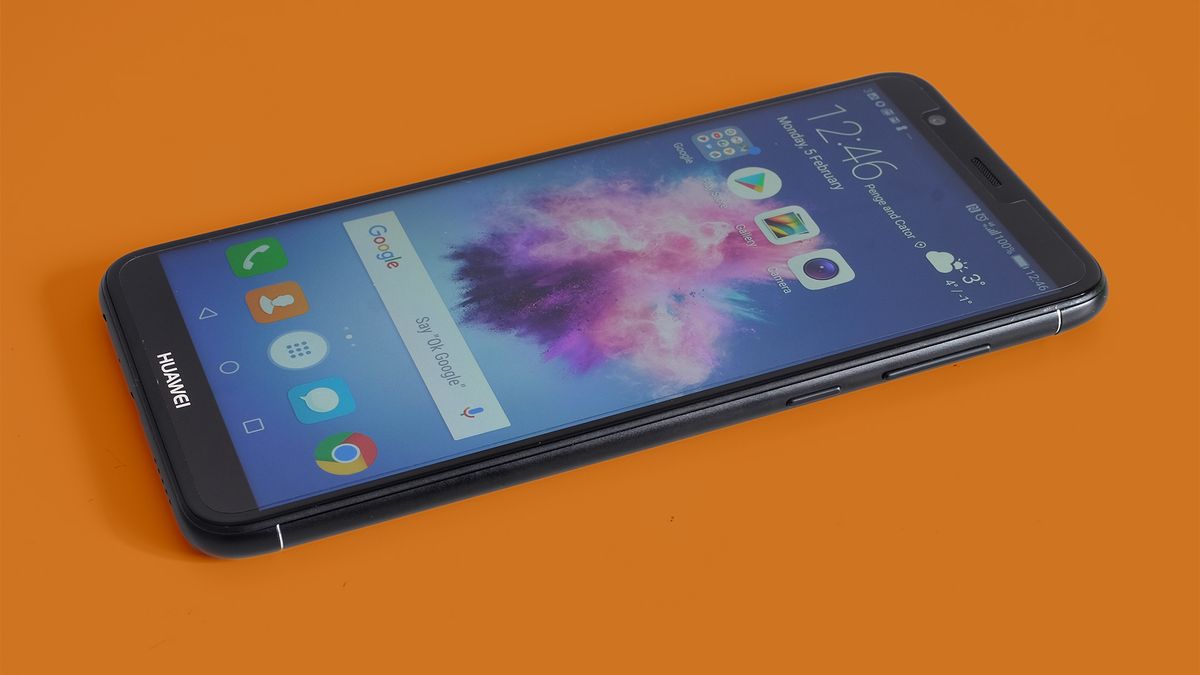Why you can trust TechRadar
Battery life
- 3,000mAh battery lasts a day but won't stretch to two
- No fast charging
The Huawei P Smart has a 3,000mAh battery, which is a good capacity for a phone of Full HD+ resolution. In our experience the phone lasts a full day without issue, including a few hours of podcast streaming, some web browsing and many WhatsApp checks.
However, it doesn't quite reach the heights of Huawei's top performers like the Huawei Mate 20 Pro and Huawei P20 Pro. While we found we usually had some juice left to take us into mid-morning on day two, the Huawei P Smart is not a phone we could get to last a full two days of normal use.
Playing back a 90-minute 720p video at maximum brightness takes 22% off the charge level, which is not bad but worse than the Moto G5S. That lost just 16%. The newer Moto G6 was comparable though with a drop of 21%.
It also lacks true fast charging. 'Turbo' chargers either use higher-than-normal voltage or current to replenish a phone's battery very quickly but the Huawei P Smart's just uses the standard 5V, 2A plug.
More expensive Huawei's use the company's SuperCharger, which provides over double the power transfer rate.
Camera
- Poor low-light performance
- Background blur on both cameras
- Decent daylight image quality
The Huawei P Smart has two cameras on its rear. Huawei has made more dual camera devices than just about any other manufacturer, but this is one of its lower-end setups.
There's a 13MP main sensor and a low-resolution 2MP one to provide depth information. Some dual camera arrays are used to improve image quality, add zoom or even a wide-angle view. The Huawei P Smart's is just for wide aperture shooting, letting you blur out the background or foreground for a dramatic effect.
Using a low-res depth sensor means the unseen 3D map the Huawei P Smart makes of a scene is rudimentary. As a result, edges tend to get confused and you end up with odd-looking photos unless your subject is reasonably close, simple and is well-separated from the background.
We can't fault the phone for trying, though, as it'll apply pretty dramatic blur to almost any scene. It just won't always do it that well.
The Huawei P Smart also lacks the artificial intelligence scene processing of some high-end phones. However, it does have a good stab at managing scenes with tricky brightness levels, applying post-processing to make each look right.
Your day-lit photos will look great on the Huawei P Smart's own screen. Opening them up on our color-calibrated monitor, though, it's clear the phone only has entry-level hardware. Fine details look vaguer than they would seen through a high-quality 12MP phone camera and dynamic range is just okay.

The Huawei P Smart does not handle night shooting well. It's slow to take photos, dark scenes will often appear severely underexposed, and when they are not they'll either look very soft or noisy.
At the price the Huawei P Smart's camera is fine, but it does not set any new standards.
Phones like the Honor 10 and OnePlus 6T have much better cameras, a reason some may want to spend more.
As in other Huawei phones, there are many extra modes. These include HDR, time lapse, light painting and a pro mode that gives you control over parameters like shutter speed, ISO and exposure. You'd need to use a tripod to get the best out of the latter, though, as there's no stabilization to let you slow down the shutter without ending up with blurred shots.
Around the front, the Huawei P Smart has a single 8MP selfie camera. It's a good one too, producing natural-looking skin tones and good detail with reasonable lighting.
There's also a selfie background blur mode that uses software smarts rather than a second camera. As with the rear blur effect, the outlines aren't always perfect, but are usually sound enough.
Camera samples














Current page: Battery life and camera
Prev Page Introduction, key features and design Next Page Anything else I should know?Andrew is a freelance journalist and has been writing and editing for some of the UK's top tech and lifestyle publications including TrustedReviews, Stuff, T3, TechRadar, Lifehacker and others.
Most Popular



